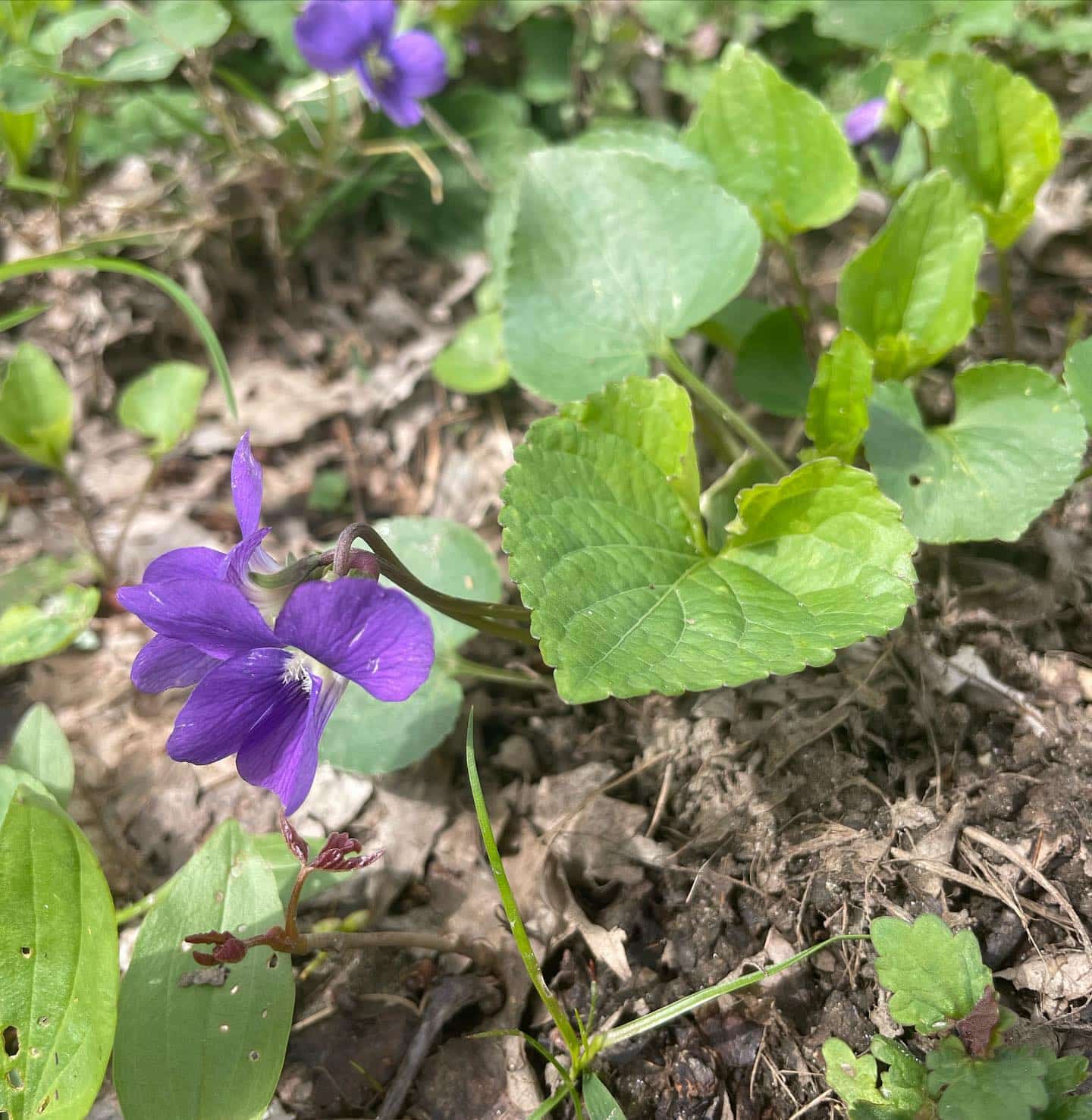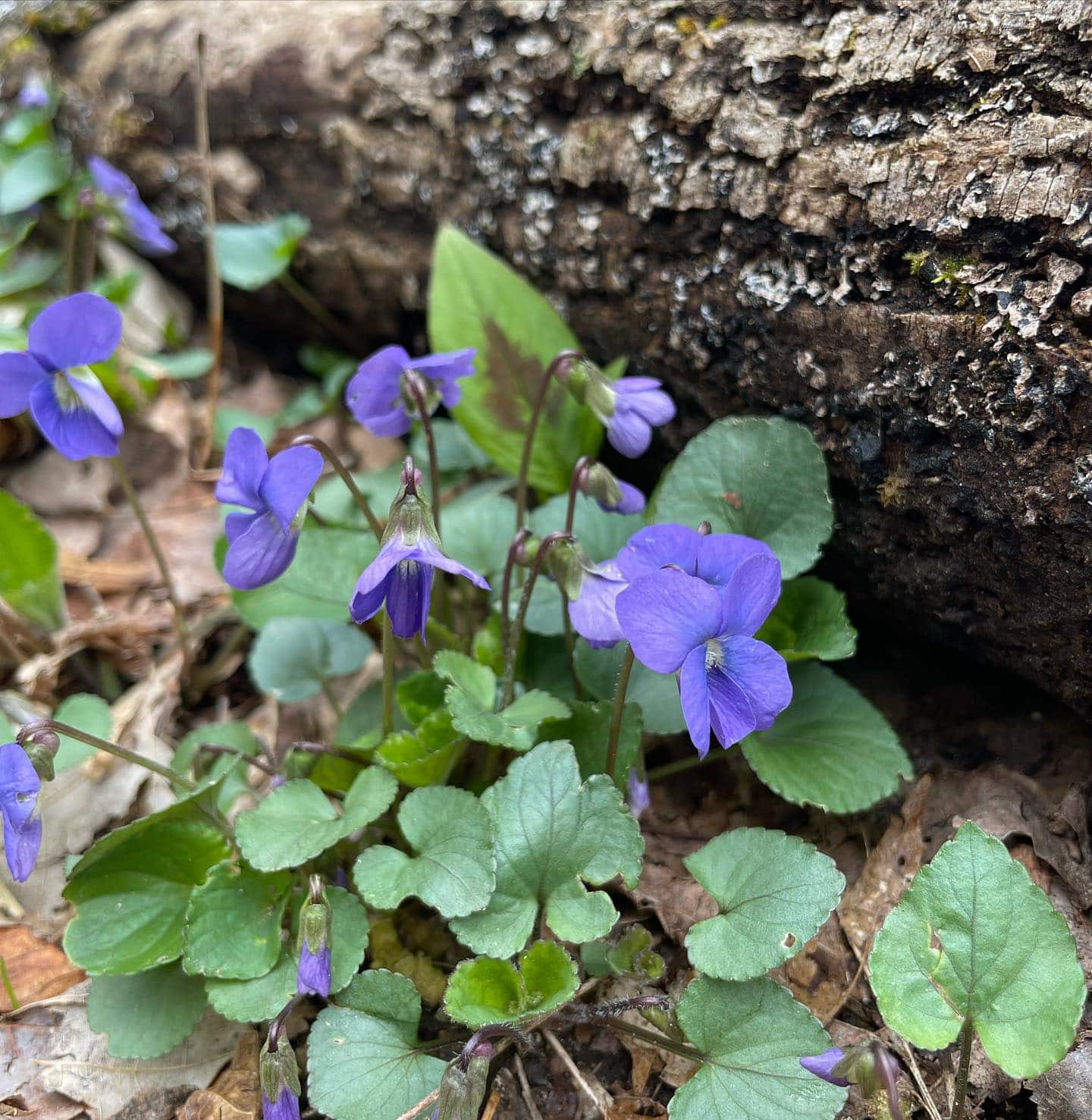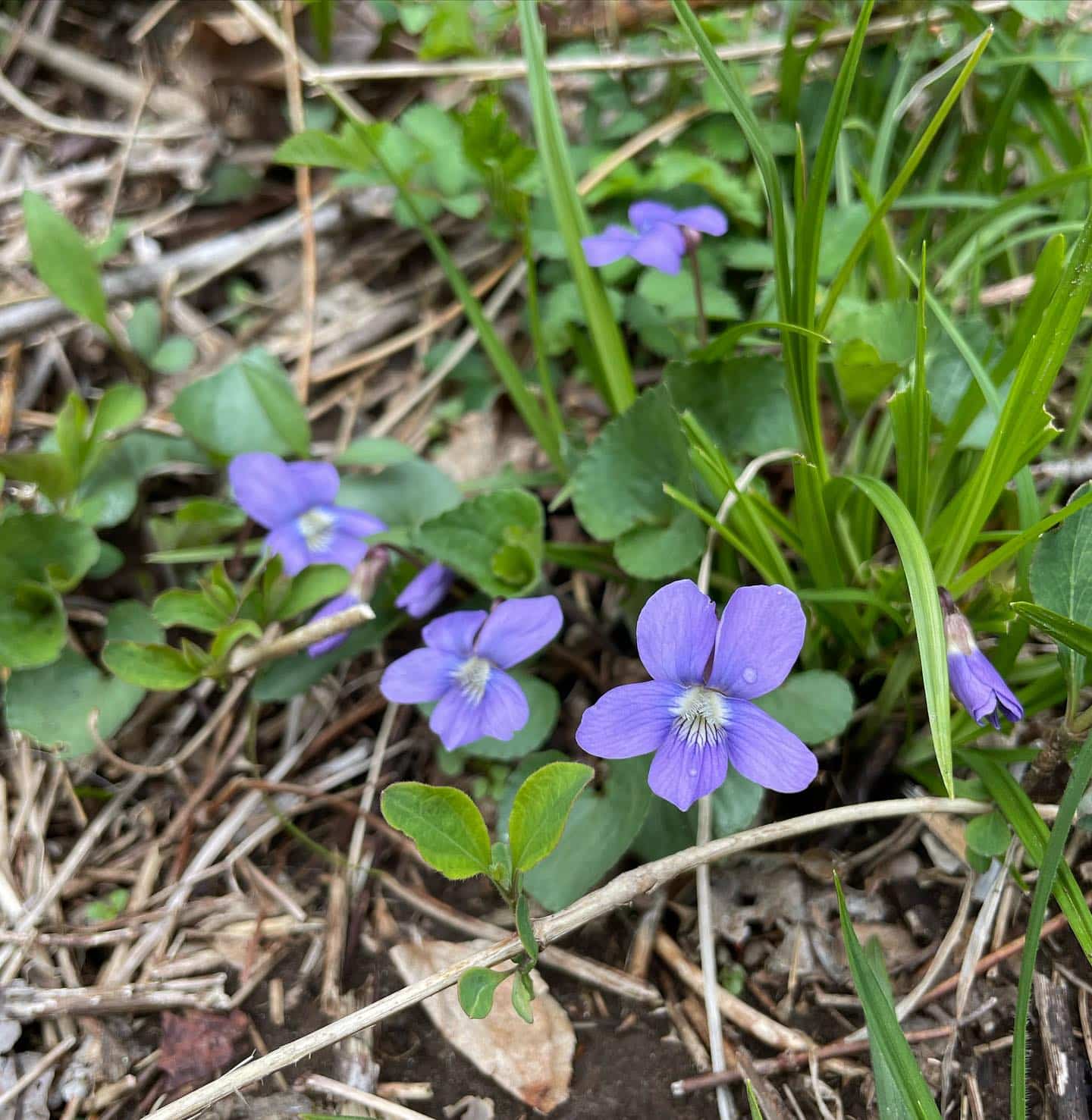Page Created by Connecticut Foraging Club
Upcoming Events | Meet the Instructors | Plant Archive | Mushroom Archive
----------------
Upcoming Events | Meet the Instructors | Plant Archive | Mushroom Archive
----------------
Common Violets (Viola sororia) are a native perennial that produce one of the first spring flowers.

Common violets prefer moist soil with partial shade. They are often found under deciduous trees.
Common violets have heart-shaped leaves with small, pointed teeth at the leaf margins. Flowers have five petals that are usually purple with some white in the center. They have little to no scent.

Flowers and leaves are edible. Flowers have a mild flavor and can be enjoyed raw in a salad, infused in vinegar, turned into wine, candied, or added to muffins. Young leaves can be eaten raw in a salad, cooked in soup, or turned into pesto. Older leaves can be turned into tea.
Violet flowers and leaves have been used medicinally to treat respiratory illnesses. They can be used topically to promote lymphatic health and treat eczema.

Most violets (Viola spp.) are edible, though some have reported yellow violets causing GI distress.
Common violets mainly reproduce from underground rhizomes. They tend to be prolific. Foraging has little to no concern for sustainability.
--
Written by Amy Demers, founder of the Connecticut Foraging Club. To learn more about foraging in Connecticut, check out our upcoming classes.






